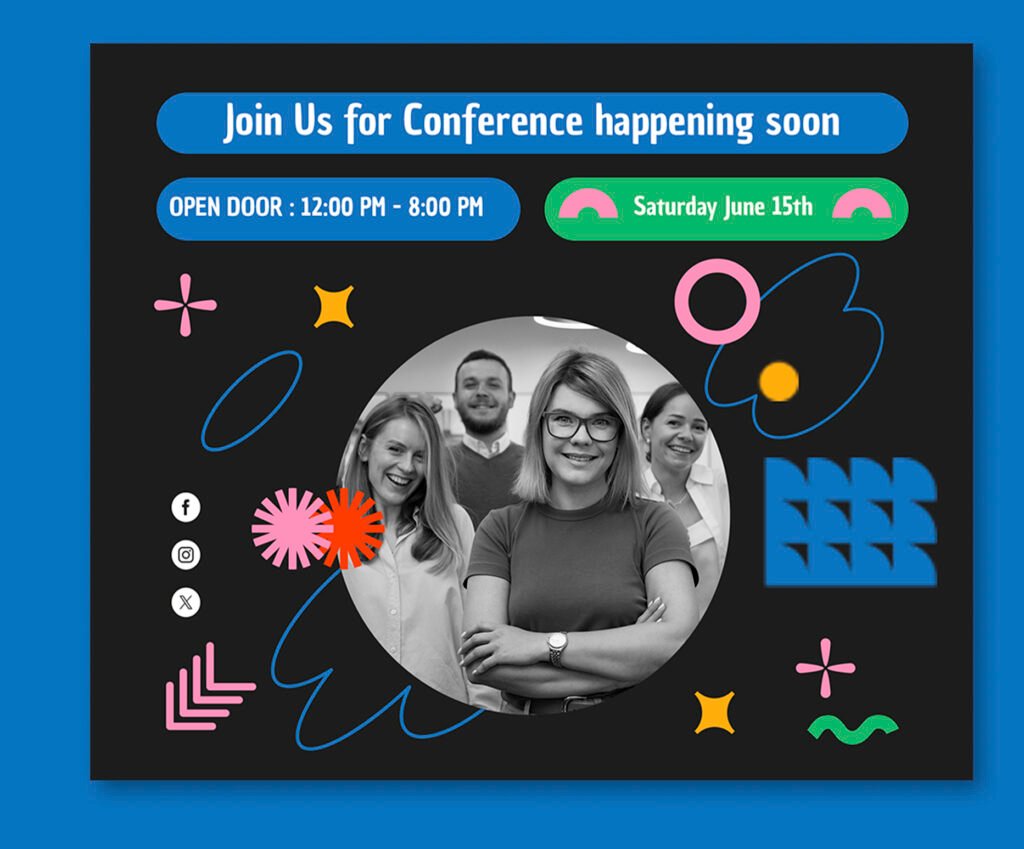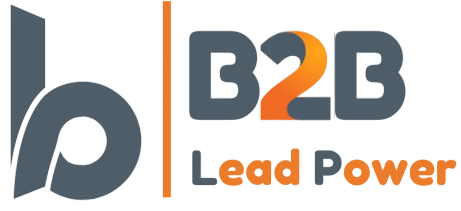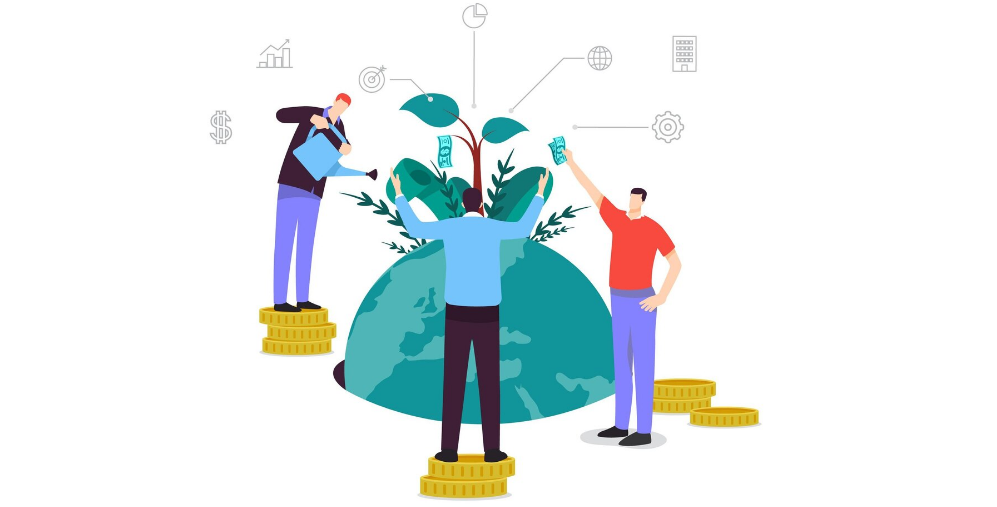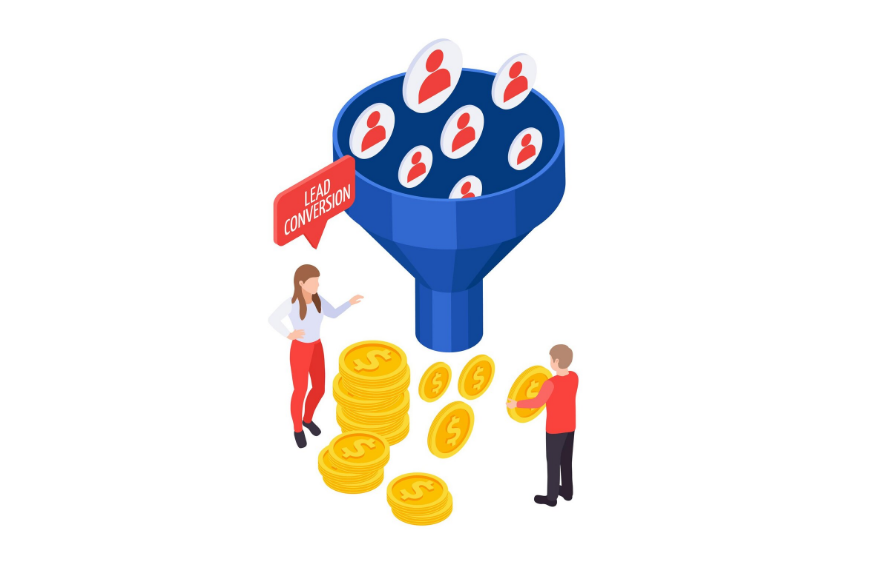Table of Contents
- Introduction to LinkedIn Events
- The Importance of High-Intent Leads in B2B
- How LinkedIn Events Facilitate Lead Generation
- Strategies for Creating Engaging LinkedIn Events
- Leveraging Event Data for Continuous Improvement
- Promoting Your LinkedIn Event for Maximum Reach
- Engaging Participants During the Event
- Post-Event Follow-Up and Nurturing Leads
- Case Studies: Success Stories from LinkedIn Events
Introduction to LinkedIn Events
LinkedIn Events have emerged as a vital component within the sphere of professional networking, enabling organizations to foster connections and nurture relationships with high-intent leads. This feature allows businesses to create and promote virtual or in-person gatherings attracting targeted audiences who share common interests or professional affiliations. By utilizing LinkedIn Events, companies can engage effectively with potential clients, industry thought leaders, and partners, facilitating meaningful discussions that can lead to valuable connections.
The significance of LinkedIn Events lies in their ability to tap into the expansive LinkedIn network, recognized as a premier platform for professional engagement. Unlike traditional marketing initiatives, which may struggle to capture the interest of prospects, events allow for direct interaction, enabling businesses to showcase their expertise and build trust. Moreover, these events can be tailored to address specific topics, industries, or audience needs, ensuring participants find relevant and engaging content that resonates with their interests.
Furthermore, LinkedIn Events can serve as an excellent tool for lead generation. The high-intent nature of attendees signifies that they are actively seeking knowledge, solutions, or collaborations within their respective fields. By delivering valuable insights through webinars, panel discussions, or workshops, businesses can position themselves as trusted authorities. This strategic engagement not only amplifies brand awareness but also has the potential to convert attendees into qualified leads.
In the rapidly evolving landscape of digital marketing and professional networking, the introduction of LinkedIn Events presents a new frontier for businesses. By leveraging this unique opportunity, organizations can create meaningful connections, foster discussions, and ultimately drive conversions, all while maintaining a focus on delivering value to their audience.
The Importance of High-Intent Leads in B2B
High-intent leads represent potential customers who exhibit a clear intention to purchase a product or service. In the B2B landscape, recognizing and targeting these leads is crucial for successful marketing strategies. Unlike casual browsers, high-intent leads actively seek solutions that address their specific business challenges, making them more likely to convert into customers.
One of the primary benefits of focusing on high-intent leads is the increased efficiency in the sales process. When marketing and sales teams concentrate their efforts on well-defined, high-intent leads, they can allocate resources more strategically. This approach significantly lowers the cost-per-acquisition (CPA) and shortens the sales cycle, allowing organizations to close deals more effectively. Moreover, high-intent leads typically require less persuasion, as their interest in the product or service is already established through their behavior, such as conducting thorough research or engaging with relevant content.
Identifying these high-intent leads is often accomplished through the analysis of intent signals. These signals may include actions such as repeated visits to a company’s website, participation in relevant industry webinars, or engagement with targeted email campaigns. Analyzing these behaviors helps B2B marketers ascertain which prospects are most likely to convert, enabling a more tailored approach to engagement. For instance, a prospect who downloads a whitepaper related to a specific product not only shows interest but may also be signaling readiness to explore purchasing options.
Investing in strategies to capture high-intent leads is indispensable for B2B organizations aiming to accelerate growth and enhance revenue streams. As competition increases within the market, businesses that leverage data to identify and nurture these prospects will maintain a significant advantage. By doing so, they can transform initial interest into long-lasting customer relationships, driving overall success in the B2B arena.
How LinkedIn Events Facilitate Lead Generation
LinkedIn Events have emerged as a powerful tool for capturing high-intent B2B leads, resonating strongly with businesses aiming to expand their market reach. By providing a platform for professional networking and engagement, these events create invaluable opportunities for companies to connect with potential clients. The ability to host virtual or in-person gatherings enables brands to showcase their expertise and establish thought leadership within their respective industries.
One of the most compelling features of LinkedIn Events is the networking opportunities they present. Attendees can interact directly with speakers, industry leaders, and like-minded professionals, fostering relationships that may lead to future business collaborations. This direct engagement allows organizations to present their offerings in a more personal and relatable manner, which can significantly enhance the chances of converting attendees into high-intent leads. Furthermore, the interactive nature of events encourages real-time discussions, helping businesses to gauge attendee interest and gather valuable insights about their target audience.
Targeted promotions are another key aspect of LinkedIn Events that aid in lead generation. Through the platform, businesses can identify and invite specific individuals or companies that align with their ideal customer profile. By leveraging LinkedIn’s extensive user data, companies can ensure that their promotional efforts reach the right audience, ultimately increasing the quality of leads generated. Additionally, using sponsored content and advertisements can further amplify reach, drawing in attendees who may benefit from the event.
Data collection is essential for effective lead generation, and LinkedIn Events facilitate this by offering analytics on attendee engagement and participation. Organizations can access metrics such as reservation rates and post-event follow-ups, allowing them to fine-tune their strategies for future events. By understanding what resonates with their audience, businesses can enhance their value proposition and improve their lead generation efforts consistently. Overall, the integration of networking, targeted promotions, and data collection in LinkedIn Events empowers businesses to capture high-intent leads effectively.
Strategies for Creating Engaging LinkedIn Events
To effectively capture high-intent B2B leads through LinkedIn Events, it is essential to develop a strategic approach that encompasses planning, execution, and post-event engagement. One of the first steps is to create compelling content that resonates with your target audience. Start by identifying the specific pain points or interests of prospects within your industry. This will allow you to tailor your event’s topics and speakers, ensuring that your content is not only relevant but also valuable to attendees.
Targeting the right audience is crucial for the success of LinkedIn Events. Utilize LinkedIn’s advanced targeting features to segment your list based on various criteria such as job title, industry, or geographical location. This targeted approach helps increase the likelihood that attendees will find your event engaging and will resonate with their professional needs. Additionally, consider creating personalized invitations that highlight how your event aligns with their interests to further encourage participation.
Promoting the event effectively is another critical element. Use a multi-channel approach, sharing event details through LinkedIn posts, direct messages, and email campaigns. Utilize sponsored content to enhance visibility and reach a broader audience. Engaging visuals, such as captivating graphics and promotional videos, can significantly improve interest and shareability across platforms. Ensure that all promotional material communicates the value of attending your LinkedIn Event to compel potential leads to register.
Lastly, ensuring participant interaction during the event is paramount. Implement interactive features such as polls, Q&A sessions, and breakout discussions to foster engagement. Encourage attendees to share their thoughts and experiences related to the topic, creating an interactive environment that promotes networking and collaboration. Effective engagement throughout the event not only enhances the attendee experience but also positions your company as a thought leader in the industry.

Leveraging Event Data for Continuous Improvement
In today’s competitive landscape, analyzing event data is paramount for businesses utilizing LinkedIn Events to generate high-intent B2B leads. By reviewing specific metrics collected during these events, organizations can gather invaluable insights that drive future strategies and enhance lead generation efforts.
Key performance indicators (KPIs) to monitor include attendance rates, engagement levels during sessions, and post-event follow-up responses. Attendance rates reveal the effectiveness of promotional efforts, while engagement levels—measured through polls, Q&A participation, and chat contributions—indicate audience interest and involvement. Additionally, evaluating post-event interactions, such as downloads of materials or requests for follow-up meetings, provides a clear picture of how well the event resonated with attendees.
Once the relevant data is collected, the next step is interpretation. For instance, a high attendance rate paired with low engagement could suggest that the event topic attracted interest but failed to maintain it. Conversely, high engagement with a lower attendance might indicate that niche subjects are effective but need broader marketing strategies to reach larger audiences. Understanding these dynamics allows for targeted adjustments in future events to better align with audience preferences and expectations.
Finally, the application of lessons learned is critical for continuous improvement. By refining topics, formats, and promotional tactics based on data analysis, businesses can enhance their ability to capture high-intent leads. Regularly reviewing and applying insights from past events not only fosters a culture of innovation but also positions organizations to stay ahead in lead generation efforts.
In conclusion, leveraging event data from LinkedIn Events is essential for refining future strategies and optimizing lead generation processes. By tracking critical metrics and applying analytical insights, businesses can continually adapt, ensuring their events effectively engage and convert high-intent B2B leads.
Promoting Your LinkedIn Event for Maximum Reach
To successfully promote your LinkedIn event, it is essential to utilize a combination of organic and paid strategies that leverage the platform’s unique capabilities. Organic promotion can begin with the thoughtful use of LinkedIn’s vast network. Start by creating engaging posts that provide insights into what attendees can expect. Highlight the value proposition clearly, whether it is a chance to learn from industry experts, network with peers, or gain insights into new trends. Consider utilizing video snippets or visuals to capture attention, thereby enhancing engagement and sparking interest.
In addition to posts on your personal profile, share the event within relevant LinkedIn groups to reach a highly targeted audience. Participating in discussions related to your event beforehand can create buzz and encourage members to attend. Additionally, encourage your team members and connections to share the event amongst their networks to expand visibility significantly. Using LinkedIn’s event features to send invitations to your connections can also effectively increase attendance.
On the other hand, paid promotion can further enhance your reach. LinkedIn Ads provide an organized means to target specific demographics based on industry, job title, and interests, ensuring your event reaches individuals who have a high likelihood of attending. Sponsored Content or Message Ads can serve as tools to promote your event directly to the inbox of your target audience, significantly increasing the probability of engagement. Regularly tracking the performance of these ads will also enable you to refine targeting strategies and improve overall effectiveness.
Moreover, cross-promoting on other social media platforms complements your LinkedIn efforts. Use Twitter, Facebook, and Instagram to share unique content related to the event, and encourage shares and retweets to maximize visibility. Incorporating a unique hashtag for the event can facilitate conversation and build community around it. By implementing these strategies, you can ensure that your LinkedIn event achieves the desired reach and engagement, ultimately leading to higher attendance rates.
Engaging Participants During the Event
Once the LinkedIn event commences, engaging participants is crucial for fostering a compelling experience that not only captivates their attention but also encourages high-intent lead capture. Utilizing creative interaction methods can significantly enhance audience participation and satisfaction. One effective tactic is the incorporation of live polls throughout the event. Polls serve as an excellent tool for eliciting real-time feedback and opinions from attendees, which can then be analyzed for valuable insights into their preferences or industry trends. By presenting thoughtful questions related to the discussed topics, organizers can stimulate discussion and keep participants invested in the content.
Furthermore, hosting Q&A sessions is essential for encouraging engagement. Inviting participants to submit questions during or at the conclusion of presentations fosters a two-way dialogue. This dialogue not only provides valuable information to attendees but also positions the presenters as industry experts, enhancing their credibility. To amplify this interaction, moderating the session effectively is key. The moderator should ensure that a diverse range of questions are addressed and that every participant feels that their inquiries are acknowledged.
Networking opportunities represent another vital component of participant engagement during LinkedIn events. Providing dedicated time slots for attendees to interact with one another can lead to organic connections and fruitful discussions. Facilitating breakout sessions or discussion rooms where individuals can share experiences, insights, and potential collaborations encourages meaningful networking. By designing these opportunities thoughtfully, organizers can significantly enhance the likelihood of capturing high-intent leads.
Incorporating these tactics during a LinkedIn event not only engages participants but also promotes an atmosphere conducive to forming lasting professional relationships. By prioritizing interaction through polls, Q&A sessions, and dedicated networking time, organizers can maximize the potential of their events for lead generation and establish a robust network of industry contacts.
Post-Event Follow-Up and Nurturing Leads
Effective post-event follow-up is crucial for converting attendees into engaged leads. After a LinkedIn event, the initial excitement must be maintained through timely and strategic communications. Sending a thank-you message, whether via email or direct LinkedIn message, sets a positive tone and acknowledges participants’ involvement. This acknowledgment fosters a connection, laying the groundwork for a stronger relationship moving forward.
Personalization is key to successful follow-up strategies. Tailoring your communication based on attendees’ specific interests noted during the event can significantly enhance engagement. For instance, if certain topics generated lively discussions, targeting those points in your follow-up shows attentiveness and relevance. Additionally, including a summary of key insights or valuable resources, such as a recorded session or relevant articles, can encourage further interaction and illustrate your commitment to providing value post-event.
Content sharing is another pivotal element of lead nurturing. Incorporating educational materials that resonate with the audience’s interests reinforces your expertise and keeps your brand top of mind. Regularly share relevant case studies, whitepapers, or blog posts through your LinkedIn page or personal messages. This content not only supports your event’s theme but also addresses the ongoing needs of your leads.
Furthermore, establish a schedule for ongoing engagement beyond the initial follow-up. Regularly connecting through LinkedIn with periodic check-ins or sharing industry insights demonstrates your dedication to building a long-term relationship. Initiating discussions around their challenges or goals invites leads to participate, leading to valuable exchanges. Over time, nurturing these leads through consistent, relevant communication can effectively convert them into loyal customers.
Case Studies: Success Stories from LinkedIn Events
In the evolving realm of digital marketing, LinkedIn Events has emerged as a powerful tool for generating high-value B2B leads. Companies across various sectors have recognized its potential and have crafted successful strategies to leverage this platform. One notable case is a software development firm that specialized in enterprise solutions. Amid a saturated market, the company organized a webinar on “Streamlining Business Processes with Technology.” By utilizing LinkedIn Events, they targeted decision-makers and company executives in relevant industries. This focused approach resulted in a 60% increase in attendee registrations compared to previous events. Following the webinar, the firm reported a conversion rate of 15% for qualified leads, attributing this success to the direct connection made during the event.
Another remarkable example is a consulting agency that sought to promote its new service offerings. Facing the challenge of limited outreach, they decided to host a series of LinkedIn Events called “Transformative Strategies for Modern Businesses.” By inviting industry experts and promising engaging content, they not only drew a significant audience but also fostered interactive discussions during the sessions. Their strategy included leveraging LinkedIn’s targeting features to invite connections and past clients, which enhanced participation rates. Ultimately, the agency managed to secure five new contracts directly linked to connections made during these events, proving that tailored marketing efforts can yield substantial results.
Furthermore, a leading marketing firm embraced LinkedIn Events to introduce its annual conference to a global audience. By promoting the event through engaging LinkedIn posts and targeted ads, they witnessed participation from various countries. The hybrid event format allowed for greater accessibility, and as a result, they experienced a 30% boost in overall participation compared to the previous year. Post-event feedback indicated that attendees found significant value in networking opportunities, leading to a newfound interest in their services. These case studies illustrate how different organizations navigated challenges and employed strategic planning to not only connect with high-intent leads but also achieve measurable outcomes through LinkedIn Events.






Leave a Reply